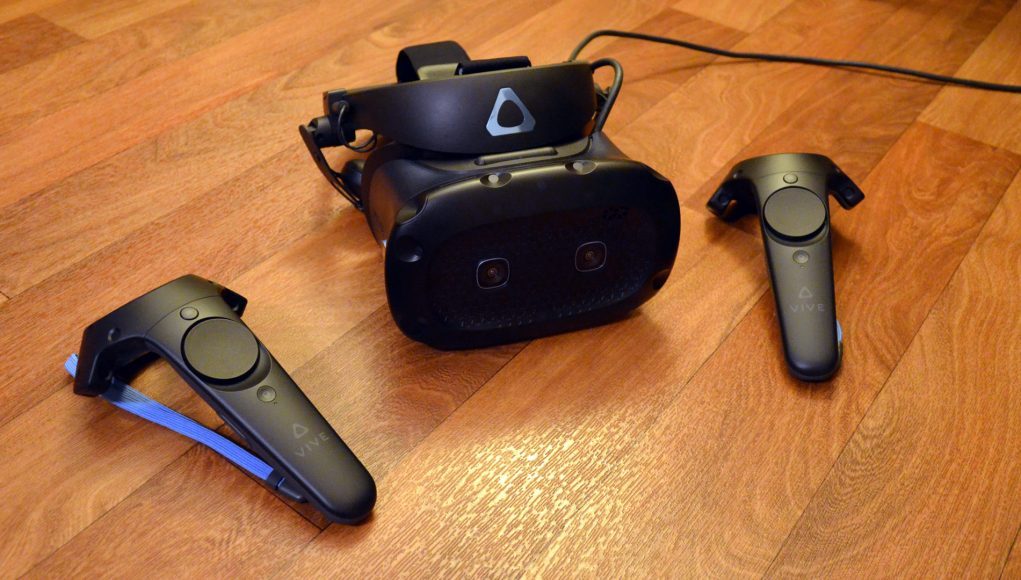HTC’s Vive Cosmos Elite headset is set to ship on the 18th and we’ve been testing the unit to bring you a full review. Cosmos Elite is the same base headset as Cosmos, but equipped with a faceplate that offers SteamVR Tracking instead of inside-out tracking. HTC also plans to also sell the ‘External Tracking Faceplate’ separately so that Cosmos users have the option to upgrade.
Introduction
This is a somewhat unique review because of Vive Cosmos’ modular approach; so let me break down where this all fits before we start.
Cosmos launched back in October as HTC’s latest consumer focused headset and its first PC headset with inside-out tracking. While the headset isn’t bad, competitors on both sides (Oculus’ Rift on the low-end and Valve’s Index on the high-end) seemed to offer better value propositions considering their price and performance.
But, Cosmos has a trick up its sleeve—a detachable faceplate which gives it some interesting modularity. And that’s where Vive Cosmos Elite comes in; it’s one of several modular variants of the headset which HTC recently introduced.
Cosmos Elite is the same Cosmos headset except equipped with what HTC calls the ‘External Tracking Faceplate’ which ditches the inside-out camera tracking for SteamVR Tracking which brings more accuracy but relies on external base stations (which also means more to set up).
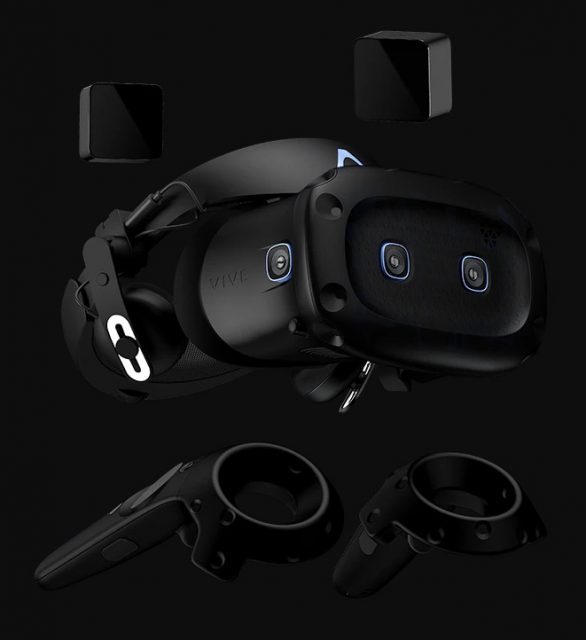
For this review, HTC sent us everything that ships with the Vive Cosmos Elite (External Tracking Faceplate, 2x SteamVR Tracking 1.0 base stations, and 2x Vive wand controllers) so that we could upgrade our original Cosmos to Cosmos Elite. With the External Tracking Faceplate equipped, Cosmos becomes virtually identical to Cosmos Elite, except that the latter comes with a matching black color compared to the dark blue of all the other Cosmos headsets.
Now with all that said, this review focuses on Cosmos Elite and the External Tracking Faceplate; since the base headset (headphones, optics, displays, ergonomics, etc.) is otherwise identical to the original Cosmos, we’ll be leaning on our original review of Cosmos where relevant rather than rehashing the same points. Let’s dig in.
Vive Cosmos Elite & External Tracking Faceplate Review
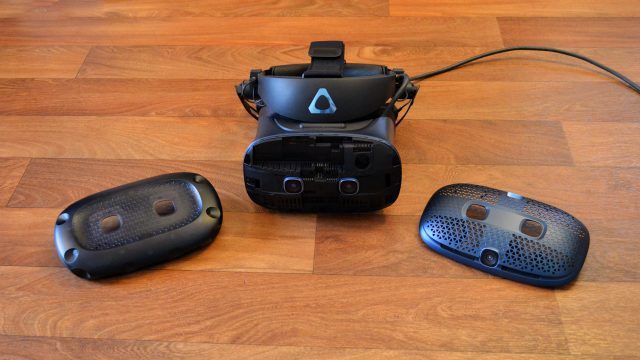
While the original Cosmos is priced at $700, for $900 Cosmos Elite comes equipped with the External Tracking Faceplate and packaged with the Vive wand controllers (instead of the Cosmos controllers) and two SteamVR Tracking 1.0 base stations.
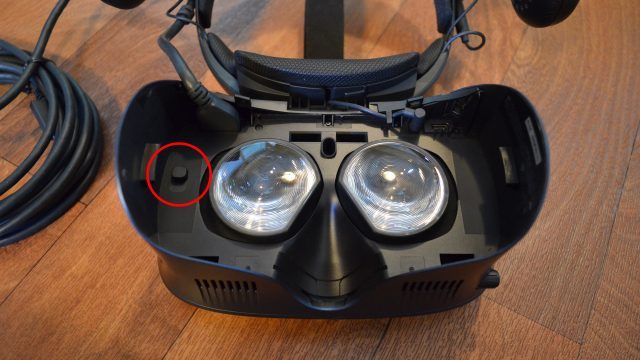
For those upgrading from Cosmos to Cosmos Elite, it’s easy to swap the default Cosmos faceplate for the External Tracking Faceplate. When looking at the lenses, you’ll find a small switch on the left side. Pull this down firmly all the way down as you pull the faceplate off; you may hear a pop or two as it’s removed.
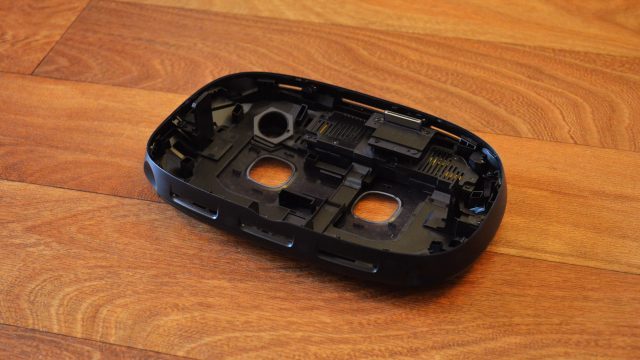
With the default faceplate removed, line up the port on the External Tracking Faceplate with the port on the headset and then firmly press around the faceplate to pop it into place. The seam should be flush with the Cosmos headset.
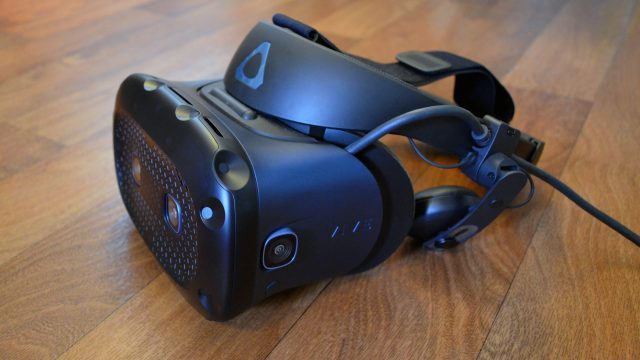
The External Tracking Faceplate is covered with those familiar Vive pockmarks under which little sensors hide. While there’s only 10 visible pockmarks on the External Tracking Faceplate, there’s many more sensors hiding underneath the IR-transparent plastic, for a total of 32 (the same number you’ll find on headsets like Index and Vive Pro).
These sensors pick up lasers from the SteamVR Tracking base stations. You technically only need one base station for tracking, but two base stations at opposite corners of your playspace is the default configuration to ensure 360 tracking coverage.
![]() The base stations each need to be connected to a wall outlet for power, but don’t need to connect to your PC. They need line of sight to each other, and it’s recommended they be mounted higher than your head and no more than 16 feet apart, supporting a tracking volume of roughly 11 × 11 feet.
The base stations each need to be connected to a wall outlet for power, but don’t need to connect to your PC. They need line of sight to each other, and it’s recommended they be mounted higher than your head and no more than 16 feet apart, supporting a tracking volume of roughly 11 × 11 feet.
The base stations include mounting hardware so that you they could be screwed into your walls, and there’s also a standard tripod screw on the bottom and back if you’d rather stick them on tripods. You could also choose to simply sit them up high somewhere like on a bookshelf, but they need to stay very still during use, otherwise tracking could get thrown off.
Vive Cosmos Elite Tracking
Compared to the inside-out tracking of the base Cosmos headset, which requires no external tracking hardware, the move to SteamVR Tracking and base stations on Cosmos Elite is a more cumbersome setup process, but the result is significantly improved tracking.
While HTC has made improvements to Cosmos’ inside-out tracking (which was pretty rough at launch), it’s still a far cry from SteamVR Tracking with the External Tracking Faceplate, which brings greater accuracy and hugely improved robustness to lighting conditions.

The Achilles’ heel of the original Cosmos is lighting; if it’s moderately dark the headset can lose tracking quality or refuse to track entirely. With SteamVR Tracking you can literally play in a daylight bright room or in a pitch black room and the tracking will keep on kicking thanks to infrared lasers, which are invisibly projected from the base stations.
Tracking performance on Cosmos Elite is notably superior to the original Cosmos; it’s more accurate with almost no discernible jitter or latency. While the External Tracking Faceplate is a modular add-on rather than being built-in, tracking felt just as good as other headsets with built-in SteamVR Tracking like Vive Pro and Index.
As for the controllers, Cosmos Elite uses the same Vive wands as the original Vive that launched back in 2016. These are pretty much a known quantity; they track very well and feel very sturdy, but their size and design reveal their age. While the Vive wands have a large trackpad and a grip ‘button’, most modern controllers have thumbsticks, face buttons, and grip ‘triggers’ (which are held rather than clicked).
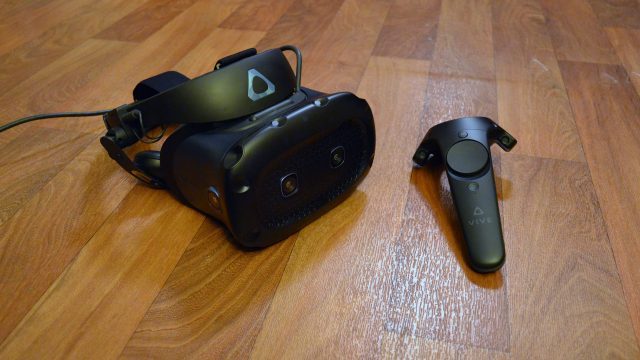
Thanks to SteamVR’s interoperability, you could choose to pair Cosmos Elite with any other SteamVR Tracking compatible controller (like Index), but unfortunately the mess that is Cosmos’ modular strategy makes this largely impractical from a price standpoint.
Ergonomics, Lenses, Displays, Audio, & More
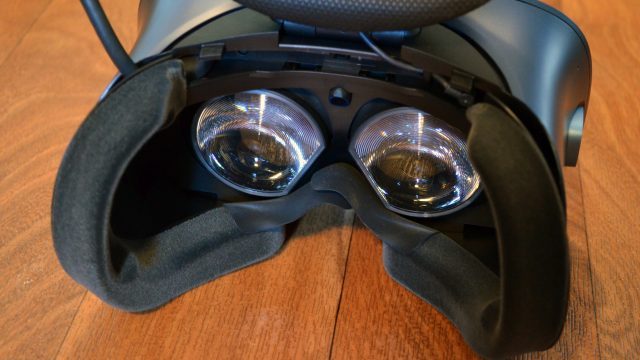
As we mentioned, Cosmos Elite is the same core Cosmos headset that launched in late 2019 but with the External Tracking Faceplate and Vive wand controllers. So rather than rehash the same points again, we’ll summarize the rest and encourage you to check out our original Cosmos review if you want the deep dive on the characteristics of the core headset.
While the External Tracking Faceplate takes care of the sub-par tracking of the original Cosmos, it doesn’t alleviate any of the headset’s other issues.
Ergonomics are a major factor for Cosmos, and even though Cosmos Elite (and the External Tracking Faceplate) include a wider top strap, it doesn’t make much of a difference. While I’ve found HTC’s Vive Pro to be very comfortable, Cosmos’ halo-style headband doesn’t work well for me. This may vary on a head-by-head basis, but I’ve found that Cosmos’ head-mount does a poor job of keeping the headset’s lenses in the ideal spot for my eyes, and its front-heavy design isn’t ideal for long sessions.
This is compounded by the fact that Cosmos’ lenses have a very small ‘sweet spot’ (the part of the lens offering the best visual clarity) and it feels like if my eyes are even a bit out of alignment then much of my view is uncomfortably blurry. I found myself needing to regularly adjust Cosmos on my head to try to keep my eyes in the sweet spot, even after setting the physical IPD adjustment correctly.
As for the displays, Cosmos’ 1,440 × 1,700 per-eye LCD displays are on par with contemporaries for pixel density and screen door effect (the space between pixels). But, going back to the small sweet spot and the ergonomic issues, it feels like more of those pixels are blurred more of the time, making Cosmos’ through-the-lens view notably the least desirable for me among Cosmos, Rift S, and Index.
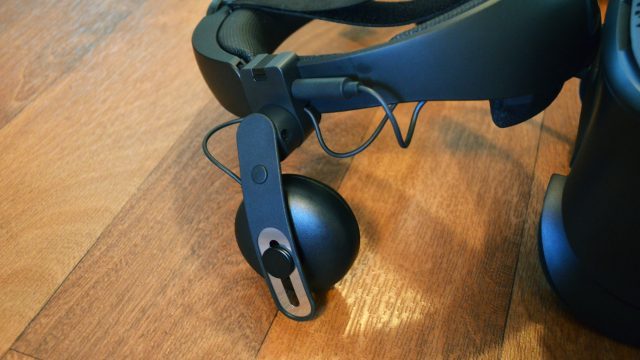
Though the snap-on headphones feel a little cheap and love to get in the way when you put on the headset, the audio quality is solid and easily better than the barely passable audio on Rift S. Index, however, still has notably better audio quality and its off-ear headphone design never bothers you when putting on the headset.
Summary
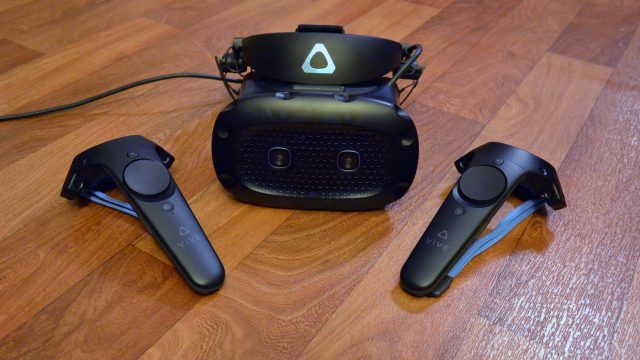
Cosmos Elite is a passable headset but it has the same core issue as the original Cosmos: it’s not competitive at the price HTC is asking. Yes, the SteamVR Tracking makes it a better headset than the original Cosmos (provided you aren’t bothered by the external tracking hardware), but it also costs an additional $200. At $900, I just can’t recommend Cosmos Elite when Rift S provides more value and Index offers a notably improved experience for just $100 more.
Even if there was someone out there who simply wouldn’t settle for a headset from any company but HTC, I would easily recommend the Vive Pro Starter Kit (also $900) over Cosmos Elite thanks to its vastly better ergonomic design—it’s a shame that the company is now discontinuing that headset.
Disclosure: HTC provided Road to VR with the Vive Cosmos Elite hardware.

